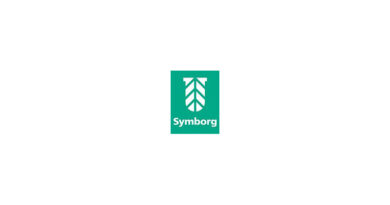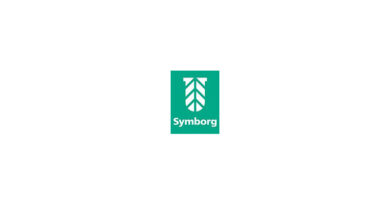What is glomus iranicum var. Tenuihypharum and why is it better than other mycorrhiza-forming fungus?
07 June 2023, US: There are those who refer to it as the ‘miracle fungus’. It was discovered in a hypersaline lake under extreme conditions in the Region of Murcia, Spain. There—where it was thought that nothing could survive—a plant of the genus Limonium was growing. How could this plant thrive under such adverse conditions?
This was how we found this arbuscular mycorrhiza-forming fungus, which was connected to the plant’s roots. The hyphae of this fungus—a kind of root system of the fungus itself—did not seem to suffer from the harmful effects of salinity and was able to continue absorbing water and nutrients, which it exchanged with the plant. This made it possible for the Limonium plant to survive despite the extreme conditions.
The fungus discovered was the so-called Glomus iranicum var. tenuihypharum, an arbuscular mycorrhiza-forming fungus (AMF) that was eventually patented by Symborg as the first and only species deposited for use as a biological inoculant under the Budapest Treaty.
Symborg developed a range of biological inoculant solutions based on it to help farmers overcome the challenges facing agriculture today and to grow more productive, profitable and sustainable crops.
Twelve years on, there are thousands of agronomic experiences across the globe that have proven this range’s effectiveness in growing extraordinary crops.
But how does the Glomus iranicum var. tenuihypharum fungus work and what differentiates it from other mycorrhiza-forming fungi? We’ll tell you everything below.
WHAT IS GLOMUS IRANICUM VAR. TENUIHYPHARUM?
Glomus iranicum var. tenuihypharum is an exclusive species of arbuscular mycorrhiza-forming fungi (AMF) which establishes a symbiotic relationship with the plant, that is, it creates a mutually beneficial bond in which the fungus provides the plant with water and nutrients in return for sugars produced during photosynthesis. This process stimulates the growth of the plant’s root system and increases its photosynthetic activity. In addition, mycorrhizal symbiosis allows crops to increase CO2 sequestration and make more efficient use of water (WUE) and nutrients (NUE).
The symbiosis begins when the fungus is introduced into the plant’s roots through the root hairs. It then establishes itself within the plant cells by forming arbuscules—structures through which the fungus exchanges water and nutrients for sugars.
For its own growth, the fungus will deploy a network of extraradical hyphae—the extramatrical mycelium—which is capable of absorbing water and nutrients and transporting them towards the arbuscule.
What’s more, the fungus is able to modulate auxins—the hormones responsible for root growth—to increase the amount of root hairs and for the fungus to form new connections and to keep growing. This is enormously beneficial for the plant because its own ability to explore the soil increases.
Meanwhile, the plant is able to increase photosynthesis to produce more sugars to exchange with the fungus and thus perpetuate this cycle of beneficial symbiosis. Enhanced photosynthesis also enables the plant to obtain additional resources that will be used to enhance productivity, as a result of the greater amount of CO2 converted into photoassimilates.
The outcome will be extraordinary crops: amazingly efficient crops that are able to make the most of every last drop of water and gram of nutrient, incredibly resilient crops that can better tolerate abiotic stresses (such as water stress and droughts, extreme temperatures or high salinity conditions), and highly profitable crops that give rise to increased yield, number of fruits per plant and fruit weight and improved fruit quality parameters (size grade, degrees Brix, nutritional content and shelf life).
WHY AREN’T ALL MYCORRHIZAL SYMBIOSES EQUAL?
Glomus iranicum var. tenuihypharum has unique and exclusive characteristics that differentiate it from other mycorrhiza-forming fungi and achieve the highest level of mycorrhizal symbiosis.
The first is because its spores are small (5-30 microns in diameter) and extraradical. Specifically, sporulation occurs outside the root hairs, neither blocking nor breaking them as with other mycorrhizal fungi, therefore the plant does not have to waste energy on forming new root hairs.
The second aspect that makes Glomus iranicum var. tenuihypharum different is the abundance of hyphae that explore the soil. This fungus can produce up to four times more extramatrical mycelium than other mycorrhiza-forming fungi. It’s a key competitive advantage for the plant to increase its capacity to absorb water and nutrients.
The third and last advantage is that Symborg’s exclusive fungus has high resistance to saline conditions, as it’s able to develop even in soils with values of up to 6 dS/m and pH 4-9. This ensures better tolerance to salinity from ongoing fertilizer use than other mycorrhiza-forming fungi.
WHERE IS GLOMUS IRANICUM VAR. TENUIHYPHARUM FOUND?
Our range of biological inoculants based on Glomus iranicum var. tenuihypharum includes four solutions with proven effectiveness.
The first is MycoUp, a biological inoculant based on Glomus iranicum var. tenuihypharum tested across a wide variety of crops and highly effective in all soil types, particularly those affected by high salinity levels.
MycoUp 360 is made up of Glomus iranicum var. tenuihypharum and our 360 complex, which develops and strengthens the root system while also promoting populations of beneficial microorganisms. This solution makes optimal development of the plant possible, even in the presence of nematodes.
We also have Resid HC, a biological inoculant developed for seed coating for cereals, pulses and oil seeds.
And lastly, there’s Resid MG, a biological inoculant specially developed for cereals with a concentrated formulation in microgranular form (1 mm in diameter). Resid MG is used during planting by means of a mechanical dosing system for microgranulates.
(For Latest Agriculture News & Updates, follow Krishak Jagat on Google News)















